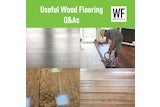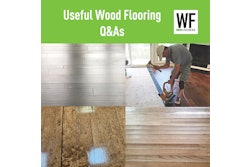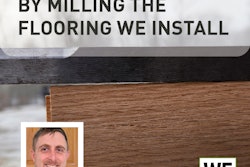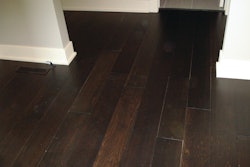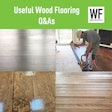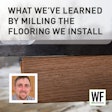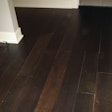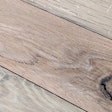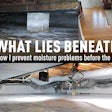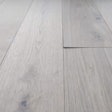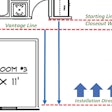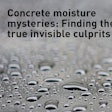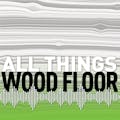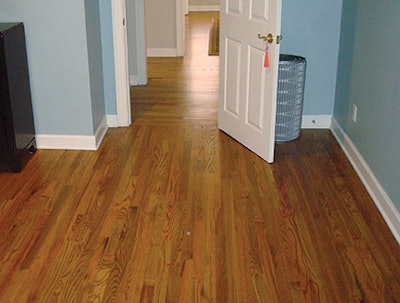
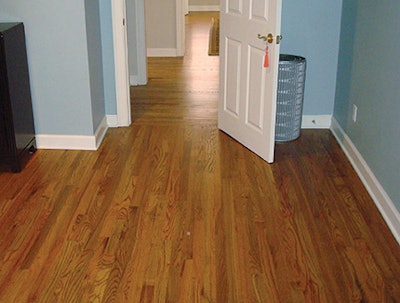
The Problem
I was called to inspect a home in which the solid strip flooring was "buckling or lifting" and cupping.
What Happened
After a water leak, the existing wood flooring was removed and a professional remediation company dried the home. No leaks were detected in the slab despite high moisture readings, so two applications of a moisture retarder were applied to the slab, and a plywood floating subfloor system was installed. Solid oak strip flooring was installed over the plywood in mid-December, and the floor was sanded and coated. One month later the entry flooring was lifting away from the slab, and in the master bedroom the doors would not close. The flooring contractor cut off the doors and cut perimeter expansion twice in the six months after installation. Once heating season began that year, the problems improved somewhat.
The Inspection
I inspected the floor approximately one year after installation. From a standing position I could see noticeable cupping in some areas and very slight gapping in some areas. I noticed buckling/lifting of the flooring in all areas when I walked on it. Measurements of 20 boards averaged 458/32 inches— at manufactured size to slightly more. Cupping measurements showed no boards more than 0.020 inch and the majority flat to up to 0.007 inch—overall, slight to noticeable. The flooring MC averaged 7.7%, and the subflooring MC measured 10.7%—within acceptable range.
The readings showed no excessive moisture in the flooring and subflooring, and since the flooring had gone through a full heating season, the cupping is considered permanent. The multiple measures and the cupping show the flooring gained moisture and expanded, resulting in the lifting. The slight gapping showed some strips had shrunk slightly. The flooring system was installed during a dry time of the year and gained environmental moisture, creating the expansion and lifting from the slab. Oven-dry testing would be necessary to determine if the flooring was extra dry during installation.
How to Fix the Floor
Extra expansion can relax the flooring. It may be possible to remove a multiple run area, cut plywood 5 inches from the wall line, install new flooring over new and old plywood and then sand and finish the floor to eliminate the permanent cupping.
In the Future
Some slight lifting of a floating system can be expected—its design allows it to move, but most movement is minimized when furniture is placed. Wood flooring should always be installed when its MC is at a mid-point of year-round expected MC levels.










